Automate private DNS record creation
Learn to how to automatically create a DNS record whenever a floating IP is assigned to a virtual machine.
Setting up the DNS Network
-
Navigate to
Network > Networks, click on theNetwork IDfrom the list of your Networks.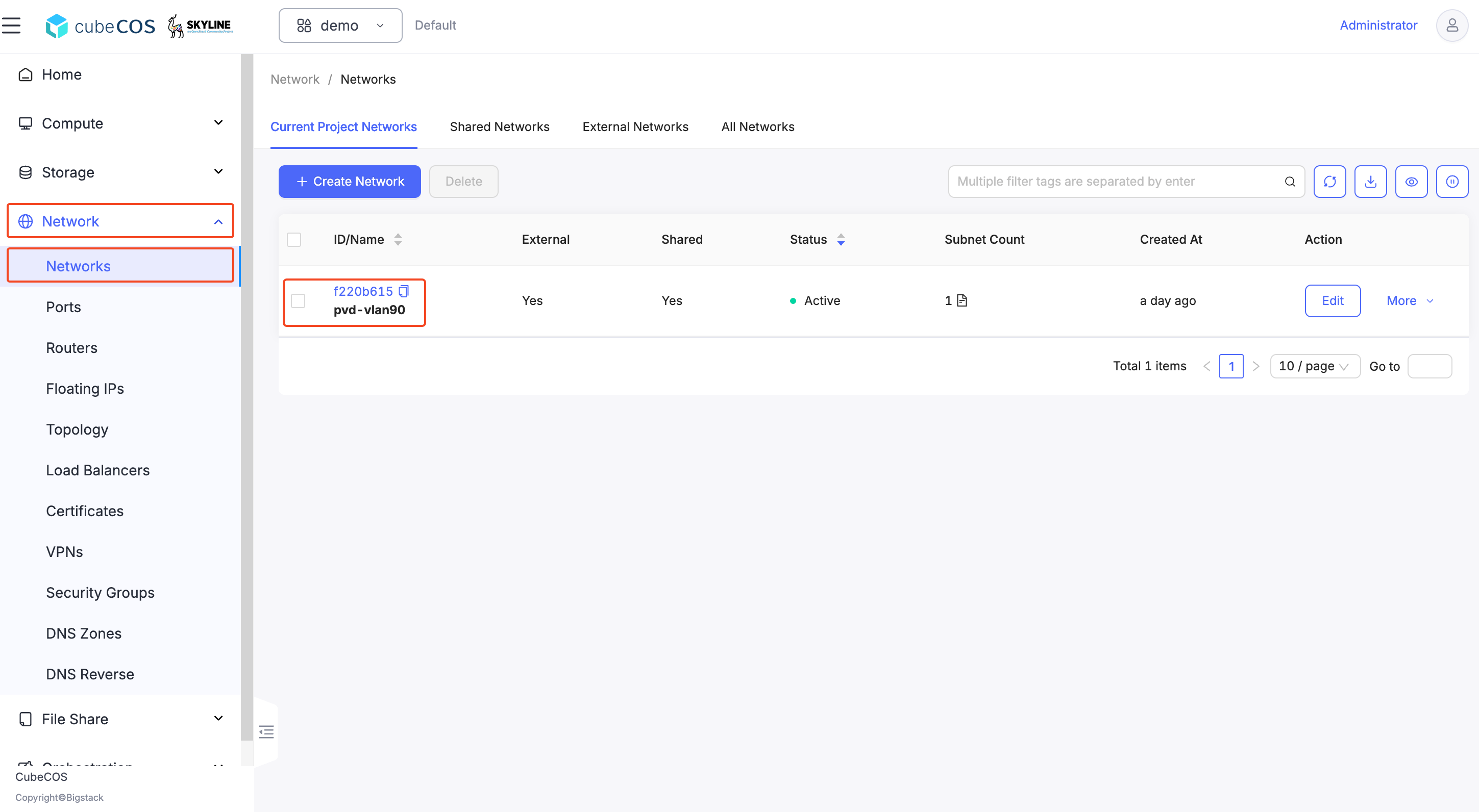
-
Select
Subnetsand clickEdit.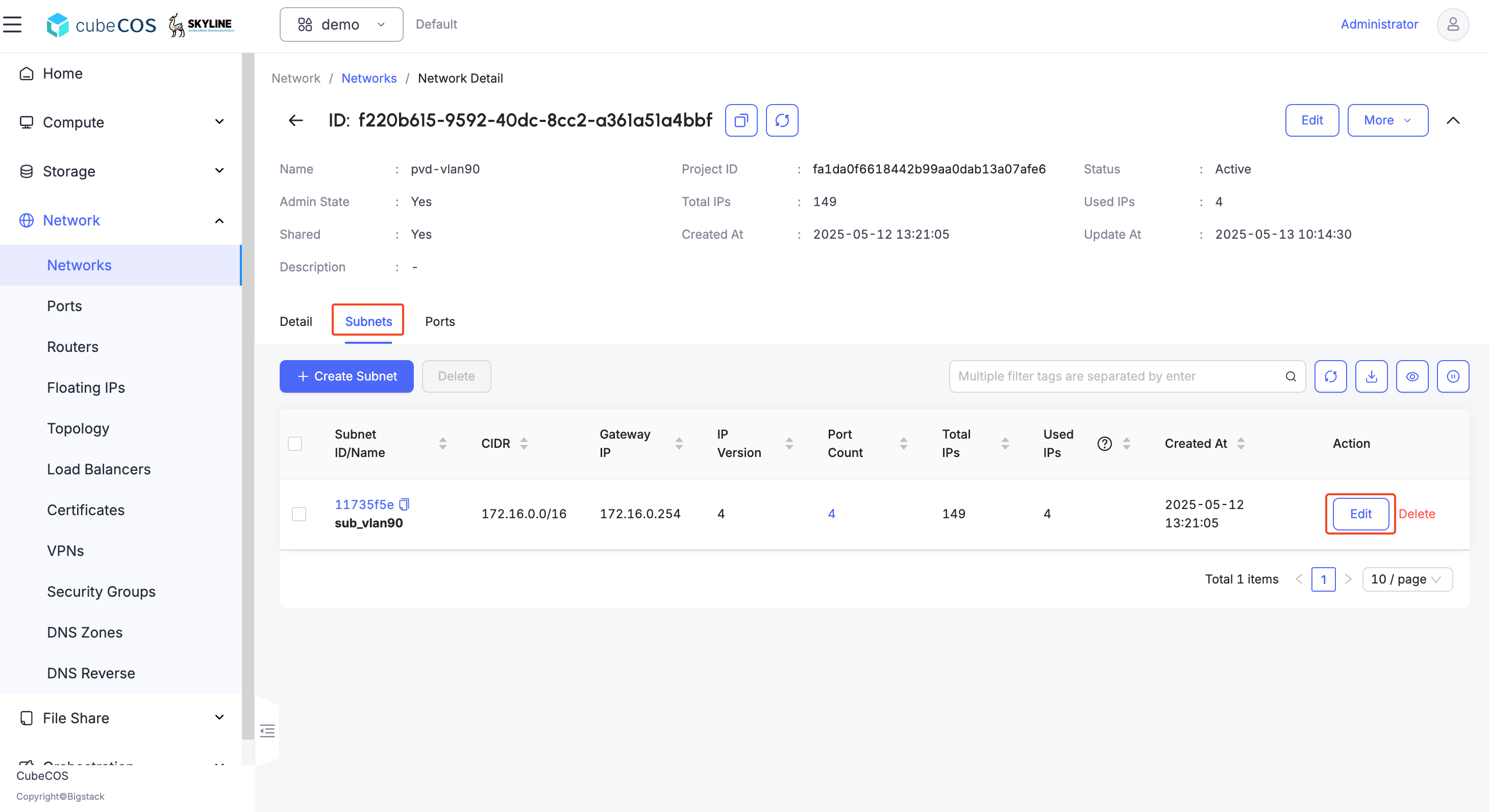
-
Type in DNS name servers with
Controller VIP.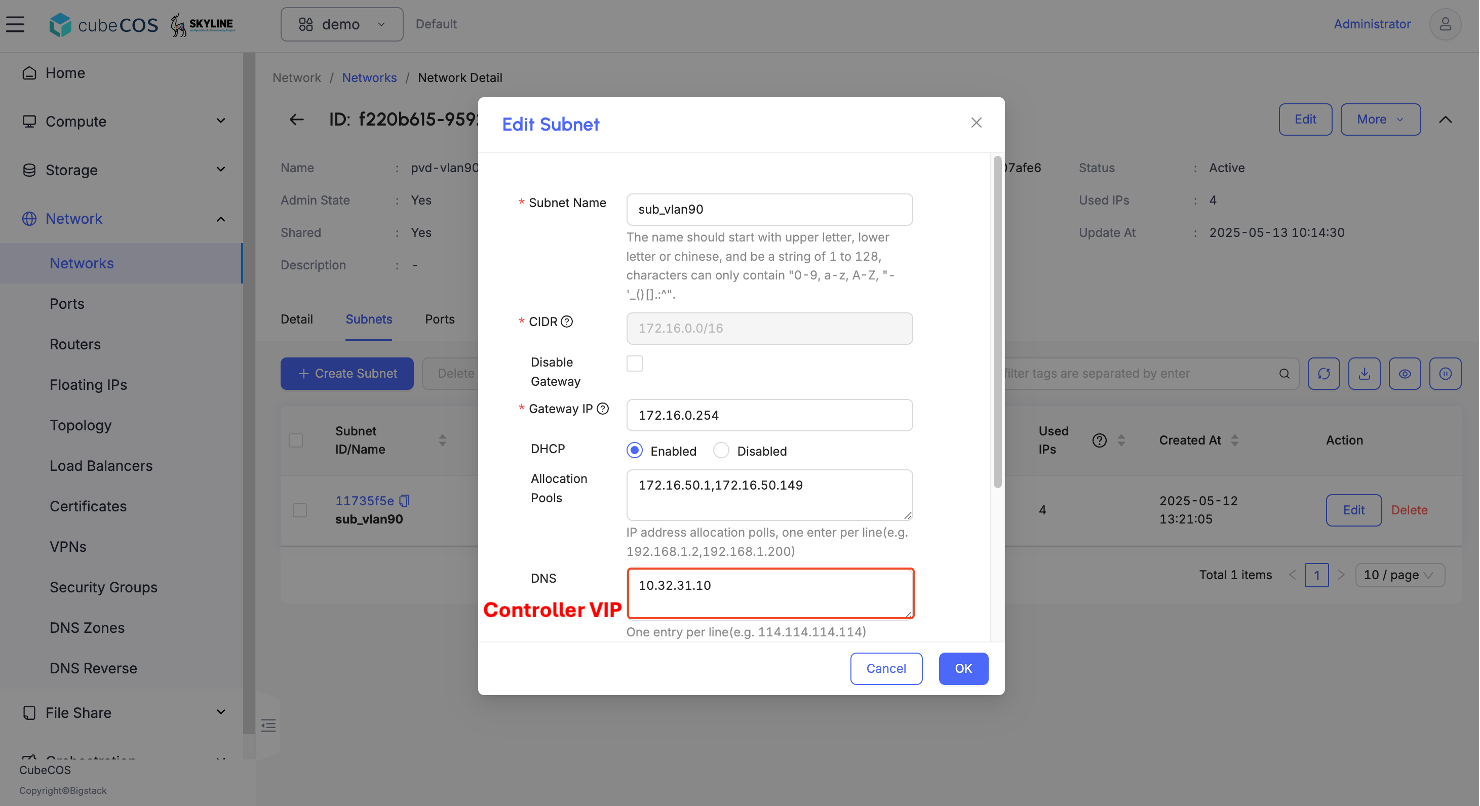
Create DNS Zone
-
Navigate
Project > Network > DNS Zones, click on theCREATE ZONE.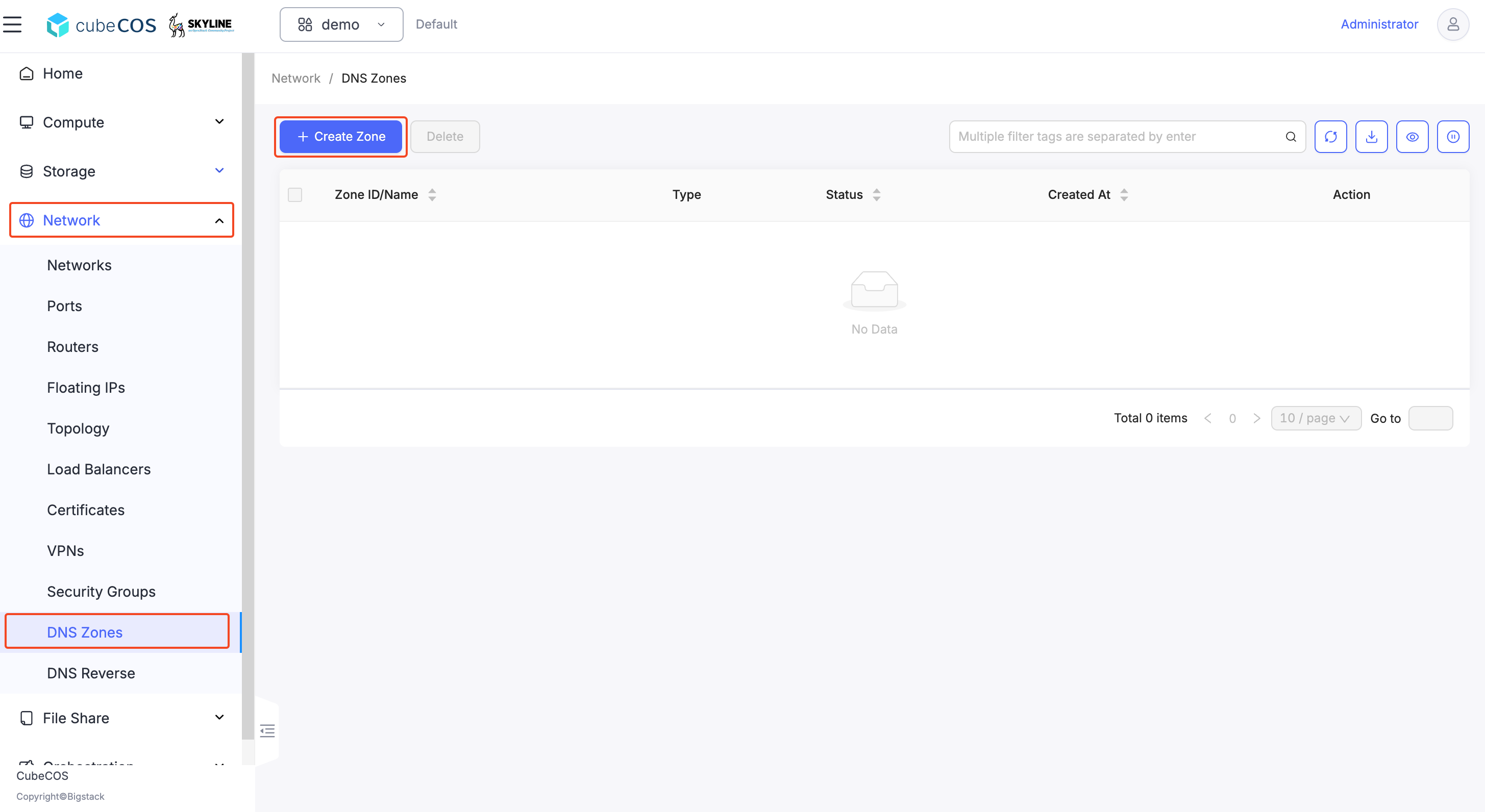
-
Create zone with a preferred/registered domain name.

Connect to console
Accessing CubeCOS cluster VIP via SSH
$ ssh [email protected]
Warning: Permanently added '172.16.1.20' (ED25519) to the list of known hosts.
[email protected]'s password:
Welcome to Cube Appliance
License (type: trial) is valid for 46 days
Enter "help" for a list of available commands
cc1>
Setting a prefix dns_domain on a private network through CLI
cc1> iaas network network_set
Select domain:
1: Default
Enter index: 1
Select tenant:
1: admin
Enter index: 1
Select network:
1: public
2: pri_192
Enter index: 2
Select type:
1: name
2: description
3: qos-policy
4: no-qos-policy
5: dns-domain
6: no-dns-domain
Enter index: 5
Input value: bigstack.local.
Updated network: a35cef55-02fa-49bf-9a1e-f844584544de
Check up the dns_domain prefix
cc1> iaas network network_show
Select domain:
1: Default
Enter index: 1
Select tenant:
1: admin
Enter index: 1
Select network:
1: public
2: pri_192
Enter index: 2
+---------------------------+--------------------------------------+
| Field | Value |
+---------------------------+--------------------------------------+
| admin_state_up | UP |
| availability_zone_hints | |
| availability_zones | |
| created_at | 2025-05-15T06:39:24Z |
| description | |
| dns_domain | bigstack.local. |
| id | a35cef55-02fa-49bf-9a1e-f844584544de |
| ipv4_address_scope | None |
| ipv6_address_scope | None |
| is_default | None |
| is_vlan_transparent | None |
| mtu | 1442 |
| name | pri_192 |
| port_security_enabled | True |
| project_id | b8d8d3f84f82451f9b6b6bbd1b115ec3 |
| provider:network_type | geneve |
| provider:physical_network | None |
| provider:segmentation_id | 2142 |
| qos_policy_id | None |
| revision_number | 3 |
| router:external | Internal |
| segments | None |
| shared | False |
| status | ACTIVE |
| subnets | e5976294-4e89-4f0d-b97f-2eec230d3758 |
| tags | |
| updated_at | 2025-05-15T06:40:48Z |
+---------------------------+--------------------------------------+
Associate Floating IP to your Instances
-
Navigate to
Project > Compute > Instance. -
Hover over
More, thenRelated Resources, and clickAssociate Floating IP.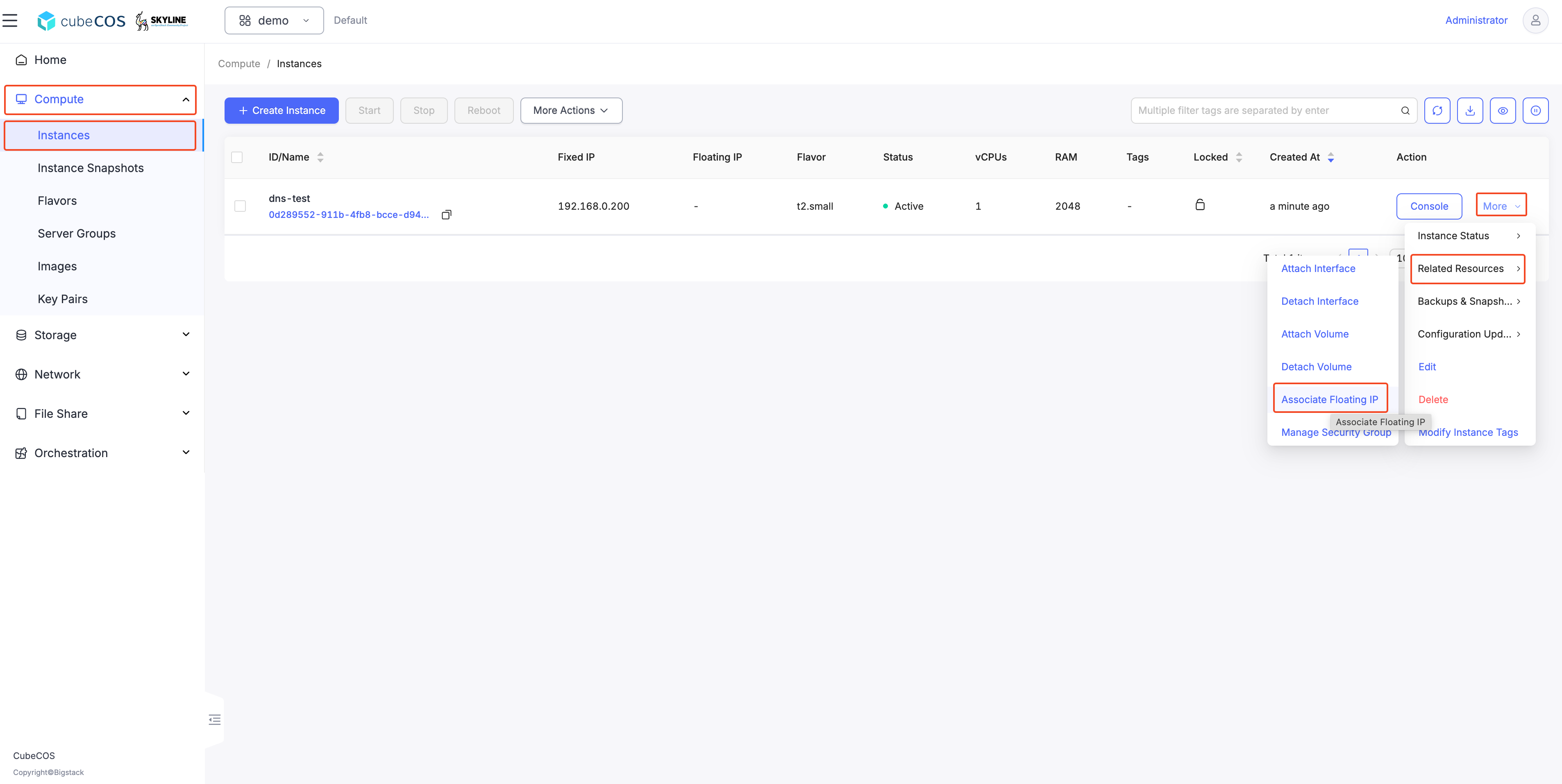
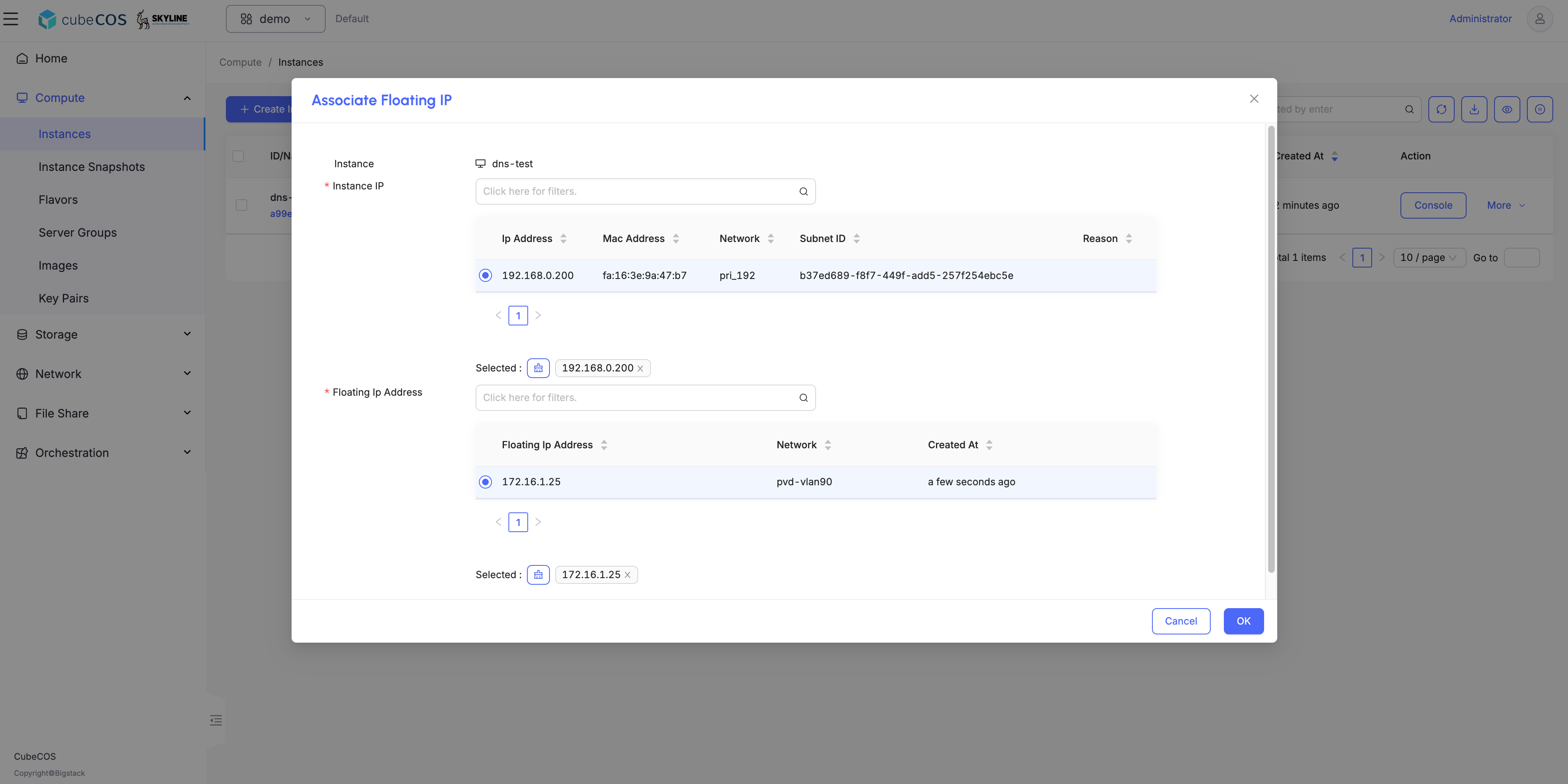
-
An IP
172.16.1.25has been associated to your instancedns-test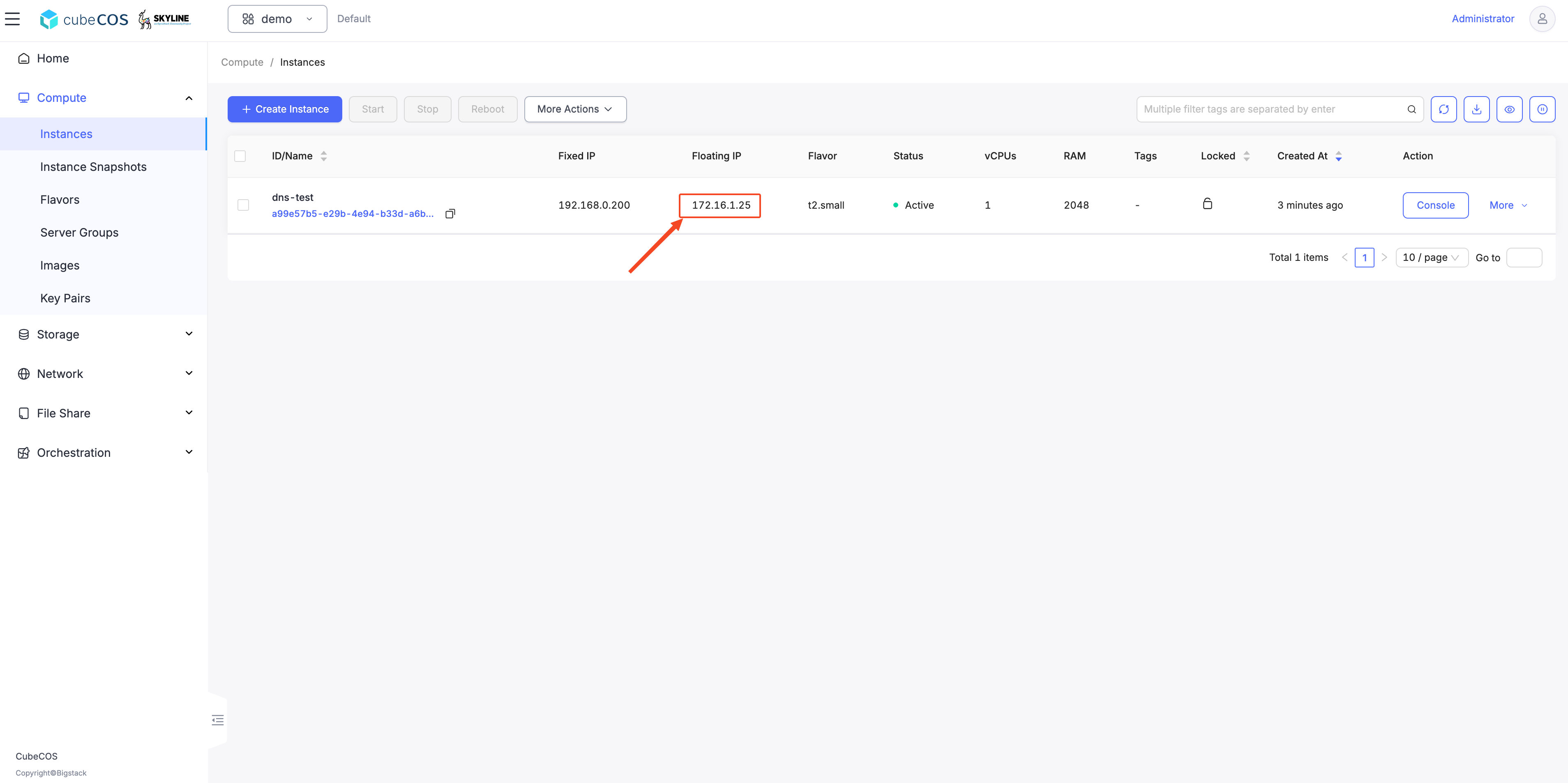
Check the zone record set of bigstack.local.
-
A Record has been created according to your instance's hostname
dns-test.bigstack.local.is mapping172.16.1.25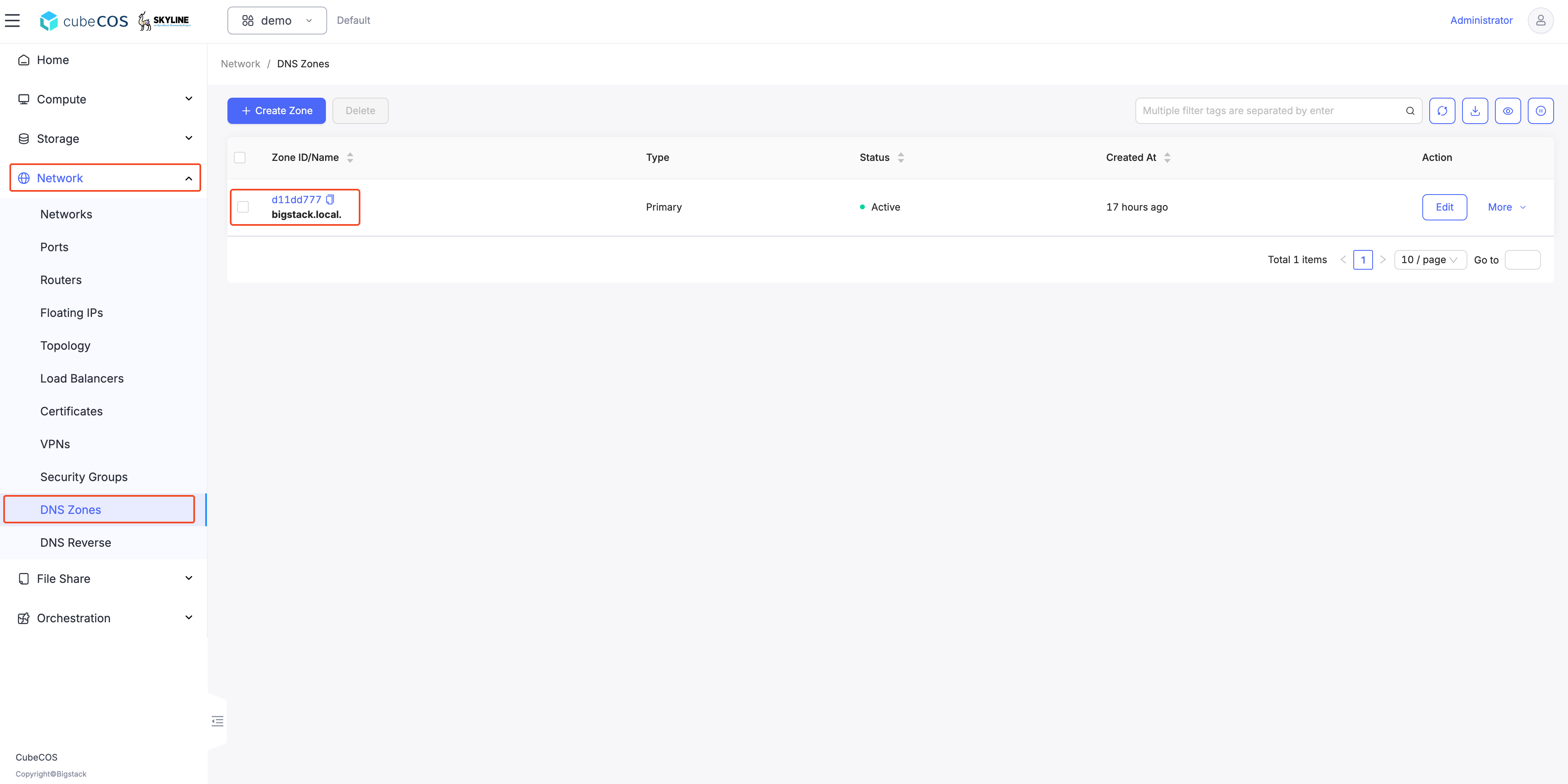
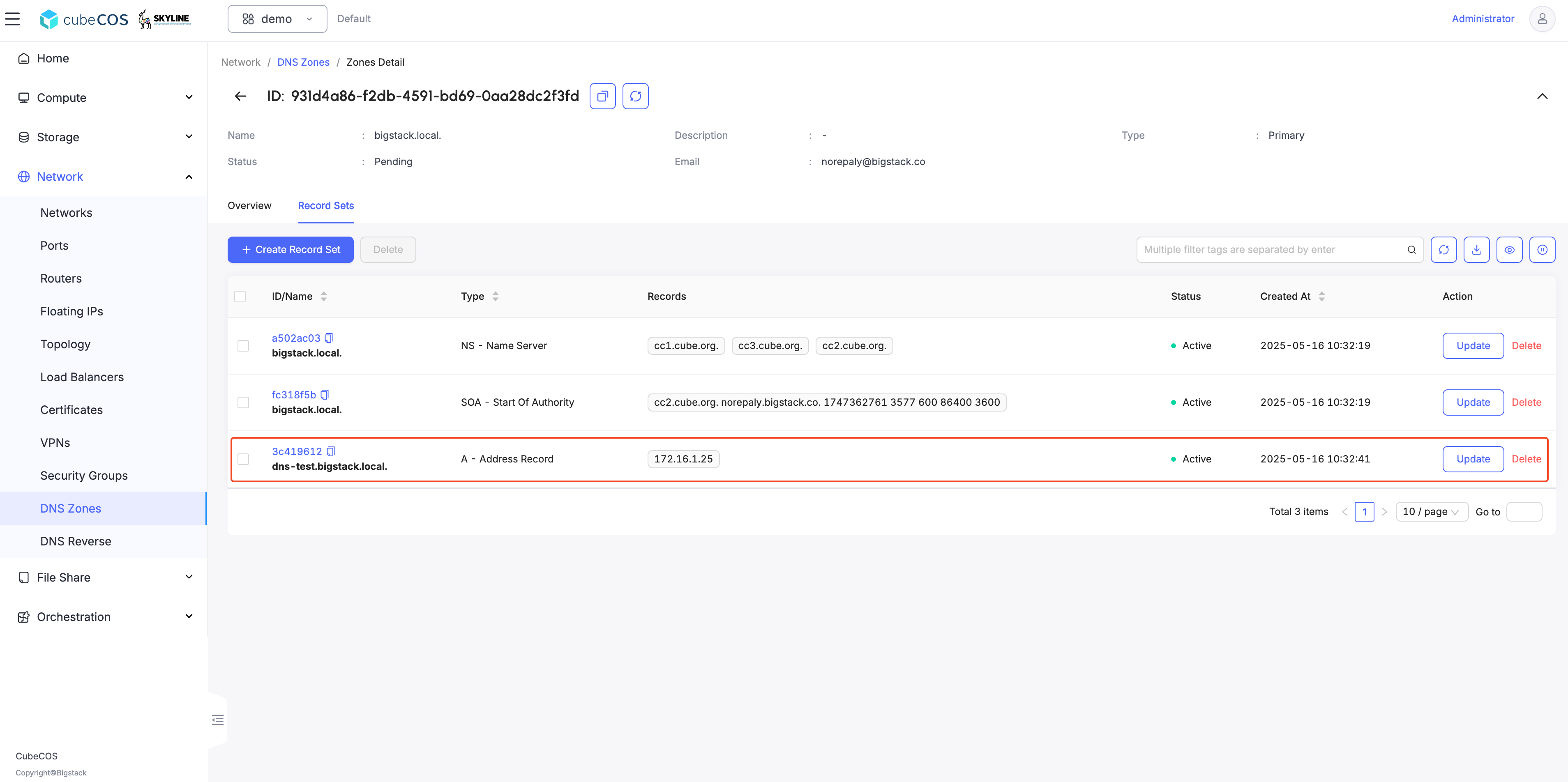
Check the DNS with nslookup
- open a terminal and run
nslookup dns-test.bigstack.local. 10.32.31.10
❯ nslookup dns-test.bigstack.local. 10.32.31.10
Server: 10.32.31.10
Address: 10.32.31.10#53
Name: dns-test.bigstack.local
Address: 172.16.1.25
Summary
In this use case, the address of a floating IP is published in the external DNS service in conjunction with the dns_name of its associated port and the dns_domain of the port’s network. The steps to execute in this use case are the following:
- Assign a valid domain name to the network’s
dns_domainattribute. This name must end with a period (.). - Boot an instance or alternatively, create a port specifying a valid value to its
dns_nameattribute. If the port is going to be used for an instance boot, the value assigned todns_namemust be equal to the host name that the Compute service will assign to the instance. Otherwise, the boot will fail. - Create a floating IP and associate it to the port.
